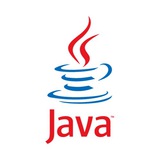tg-me.com/topJavaQuizQuestions/458
Last Update:
Understanding the Observer Design Pattern in Java
The Observer design pattern is a powerful tool in software design that allows for a one-to-many dependency between objects. When one object (the subject) changes state, all its dependents (the observers) are notified and updated automatically. Here’s a quick breakdown:
🔹 Key Components:
- Subject: Maintains a list of observers and notifies them of state changes.
- Observer: An interface that defines the update method.
🔸 Implementation Steps:
1. Create the Subject interface with methods for adding/removing observers.
2. Implement a ConcreteSubject that maintains state and notifies observers.
3. Define the Observer interface.
4. Implement ConcreteObserver that responds to updates from the subject.
🔹 Code Example:
interface Observer {
void update(String message);
}
class ConcreteObserver implements Observer {
@Override
public void update(String message) {
System.out.println("Received message: " + message);
}
}
class ConcreteSubject {
private List<Observer> observers = new ArrayList<>();
public void addObserver(Observer observer) {
observers.add(observer);
}
public void notifyObservers(String message) {
for (Observer observer : observers) {
observer.update(message);
}
}
}
Incorporating this pattern can significantly improve your code's maintainability and scalability. Happy coding! 🚀
BY Top Java Quiz Questions ☕️
Warning: Undefined variable $i in /var/www/tg-me/post.php on line 283
Share with your friend now:
tg-me.com/topJavaQuizQuestions/458
